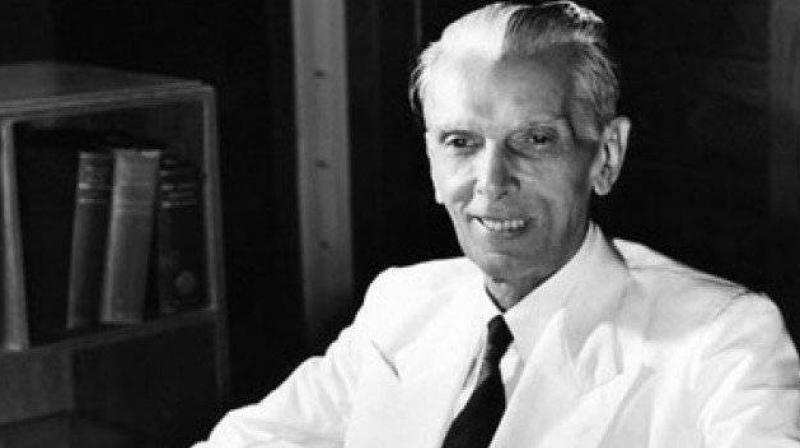Wide Angle: Kashmir, India-Pak tension, Muslim discontent All for nation-building?

The Communist Party of India is receiving disturbing signals from its Kashmir unit. That unit may have to rename itself. The “I” in the CPI has been hurting the state unit for quite some time. But after the recent surge in shootings, stone pelting, “encounters”, sustained images of wailing women, trailing the spate of funerals, the “I” now invites physical danger. True, a defunct party by any name will remain defunct, but even so, a Communist Party of Kashmir (CPK) will at least not incur the wrath of the street.
The dismal state of affairs has moved some hearts. Dineshwar Sharma, who was appointed New Delhi’s special representative to Kashmir last year, surfaced in Union home secretary Rajiv Gauba’s office. Sunk in the deepest layers of thought, home ministry mandarins have identified the cause for youth unrest — lack of sports facilities. Who can argue that sports can help, but the suggestion may run into the chicken-and-egg conundrum — start the games after stone-pelting ends, or stop the pelting before the pitch is laid.
This ironical exchange with a very neutral and well-informed friend in Srinagar has an alarming punch line: “the situation has never ever been this bad”. Obviously the “Sab ka saath, sab ka vikas” government is fired by a lofty purpose which I shall verily touch on.
Even in the days of drift in Kashmir during the tenure of P.V. Narasimha Rao, Atal Behari Vajpayee and Manmohan Singh, there was a semblance of political control by the National Conference and the PDP. Elements of the Hurriyat had their fingers on the street pulse. The scene today is anarchic — there is no control.
Reliable sources in Srinagar describe the current explosion as “indigenous”, which is not what the officials say. A narrative which discounts outside “meddling” cannot be honeyed music to the establishment. Ironical, isn’t it, that the absence of outside support to the insurgency so disturbs us?
Just when Kashmir was at fever pitch erupts mayhem at Aligarh Muslim University around a photograph of Mohammad Ali Jinnah, the man who created the country we have, with great diligence, been trained to hate. This “hatred” has been the regular fuel for the electoral engine for both major political parties from the beginning of time. It is a combustion engine, after all.
Friends are in error if they consider the undiluted hooliganism on view in Aligarh as an occasion to engage in a serious debate on Jinnah’s culpability in partitioning the country.
The hoodlums of Aligarh are not busting their guts to have Jinnah’s portrait removed from the AMU union office. Quite the contrary.
The Hindu Yuva Vahini are unemployed foot soldiers in the service of their mentors who have links with the highest in the Sangh Parivar. These maestros would love to provoke Aligarh hotheads to dig their heels in to preserve Jinnah in the university precincts. This will be the ammunition which will come in handy. The campus will be the ordnance depot for frequent explosions in the service of the projected Hindu Rashtra.
This is not the first time in recent decades that AMU has been exploited for saffron politics. Ever since Prime Minister V.P. Singh aggravated identity politics by implementing the Mandal Committee report giving reservations in government jobs to the lower castes, the BJP has rushed to prevent the caste structure from splintering. Hindu consolidation, by building up the Muslim ogre, is the obvious strategy.
Aligarh was frequently the target as part of this strategy. There was no Arnab Goswami in the 1990s, but Hindi newspapers played a lead role in widening the Hindu-Muslim divide.
A story appears in newspapers that, after horrendous riots in Aligarh city, the injured being taken to the University Medical College for treatment are being serially killed by Muslim doctors and interns. Even though the university is only a three-hour drive from New Delhi, newspapers choose to rely on unverified agency copy which, in turn, quotes upper caste Hindi newspapers.
An incredible scene is being enacted on the outskirts of the university. Local journalists seated on chairs arranged in a circle under a mango tree sip tea even as one Krishna Kumar Navman, BJP MLA from Aligarh, holds them in his thrall with graphic accounts of murders in the hospital.
“Has anyone visited the Medical College?”, I ask. They had not, they say, because it is “risky”.
At the medical college the picture is surreal: petrified doctors encircle me. “No one has come to us for clarification”, they complain.
Why have they not reached out to the journalists with their story? After a long, pregnant silence, they speak up. They thought it would be dangerous stepping out of the campus “in the midst of communal violence”.
That was 30 years ago when there were no TV channels to inculcate saffron nationalism.
Folks overtly agitated or elated at the turn of events in Aligarh may find it sobering that Pakistan’s Jinnah is not the only leader around whom communal polarisation can be contrived.
Ram Navami processionists in Kankinara, in West Bengal’s 24-Parganas area, were so overpowered by the spirit of Ram that they pulled down the statue of onetime Congress president and India’s first education minister, Maulana Azad – a person, who in his outlook was exactly the opposite of Jinnah.
Protection to anti-namaz lumpens in Gurgaon, or those who pasted a “Maharana Pratap Road” placard on New Delhi’s Akbar Road (the placard was removed the next morning), are minor episodes in an epic of hatred being manufactured for 2019, of course, and beyond if need be. In this gameplan there is no respite for Kashmiris, Muslims, or India-Pakistan peaceniks.
This has acquired greater urgency and volatility because, in parallel, the rage of the dalits and tribals is spiralling out of control. There is an element of simulation in anti Muslimism for political reasons. The retribution faced by dalits and tribals in the countryside is visceral.

